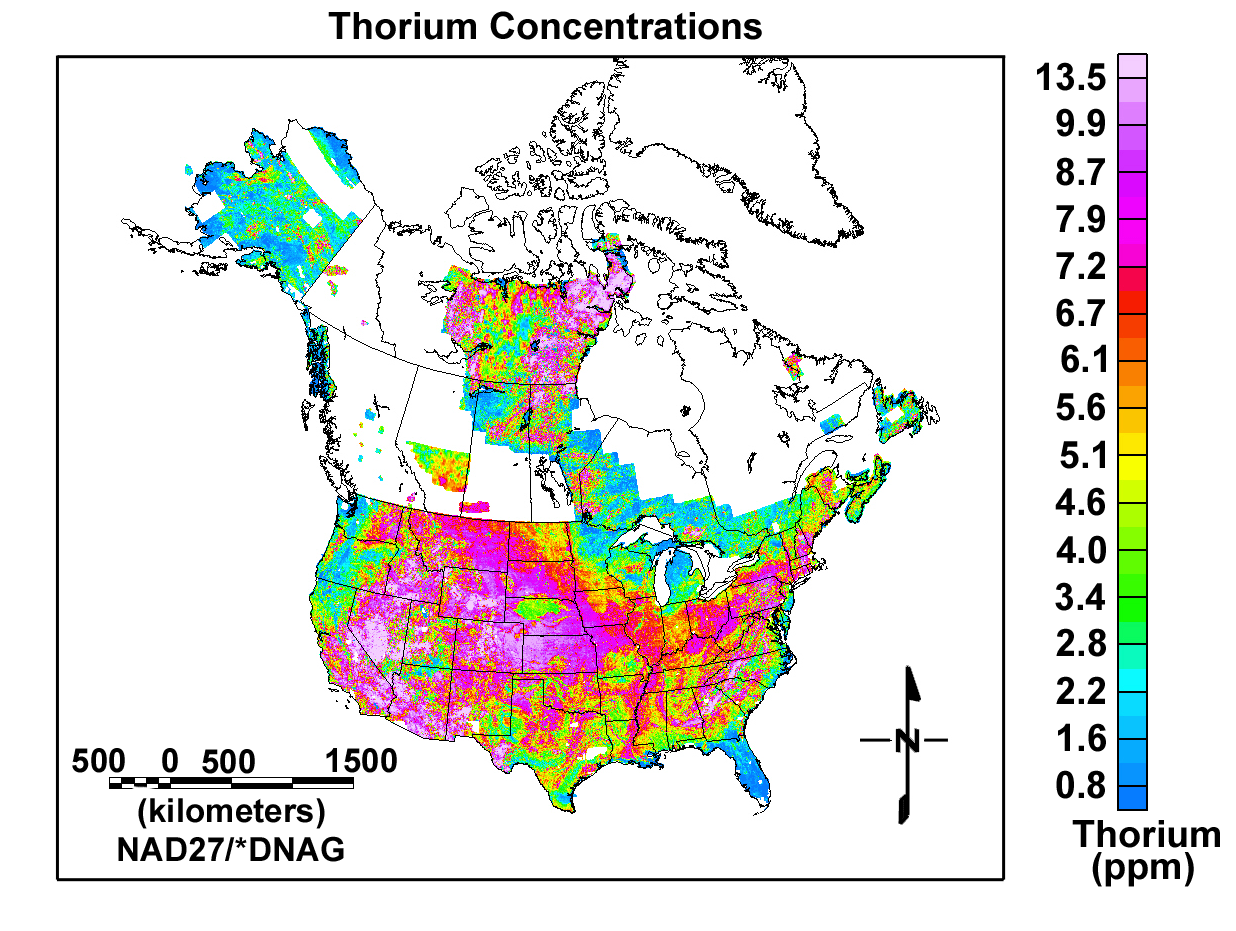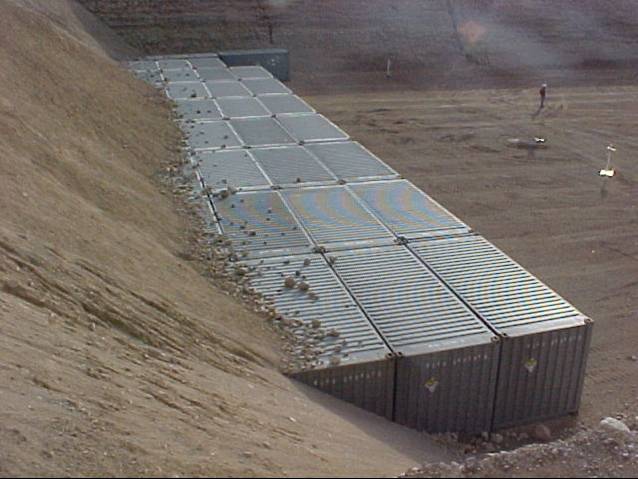A liquid flouride thorium reactor (LFTR) is much safer than a standard thermal reactor because of its use of liquid fissile material. Now thorium itself is not fissile, but when mixed with uranium-233 it creates a fissile material which is able to run the reactor. The reason this type of reactor is much safe is because the safety net is build directly into the architecture of the system. The freeze plug requires electricity to remain plugged so in the case of a power outage it would shut off and any irradiated materials would be flooded into the emergency dump tanks. The video below really emphasizes the availability and effectiveness of an LFTR compared to a thermal reactor.
The map below shows the density of thorium deposits across the United States and in some parts of Canada.
Another great advantage of thorium as a power source is the supply and efficiency. The worlds supply of thorium separated by country is shown on the chart below.
| Country | Tonnes | % of total |
| India | 846,000 | 16 |
| Turkey | 744,000 | 14 |
| Brazil | 606,000 | 11 |
| Australia | 521,000 | 10 |
| USA | 434,000 | 8 |
| Egypt | 380,000 | 7 |
| Norway | 320,000 | 6 |
| Venezuela | 300,000 | 6 |
| Canada | 172,000 | 3 |
| Russia | 155,000 | 3 |
| South Africa | 148,000 | 3 |
| China | 100,000 | 2 |
| Greenland | 86,000 | 2 |
| Finland | 60,000 | 1 |
| Sweden | 50,000 | 1 |
| Kazakhstan | 50,000 | 1 |
| Other countries | 413,000 | 8 |
| World total | 5,385,000 | |
In 2002, the worlds net energy consumption was around 14 trillion kilowatt hours. Using an LFTR at 50% efficiency it would be able to produce approximately 11 billion kilowatt hours per metric ton of thorium. To power the world with thorium it would take at a minimum 1500 metric tonnes of thorium which because of its density would only be around 130 cubic meters of volume. And comparing that figure to the supply in the chart above, even countries such as Kazakhstan and Sweden have enough thorium to power the world.
The image below is of the 3216 metric tonnes thorium that the United States Government deemed worthless and buried at the Nevada Test Site.
Sources:
Pages that I feel are important:



No comments:
Post a Comment